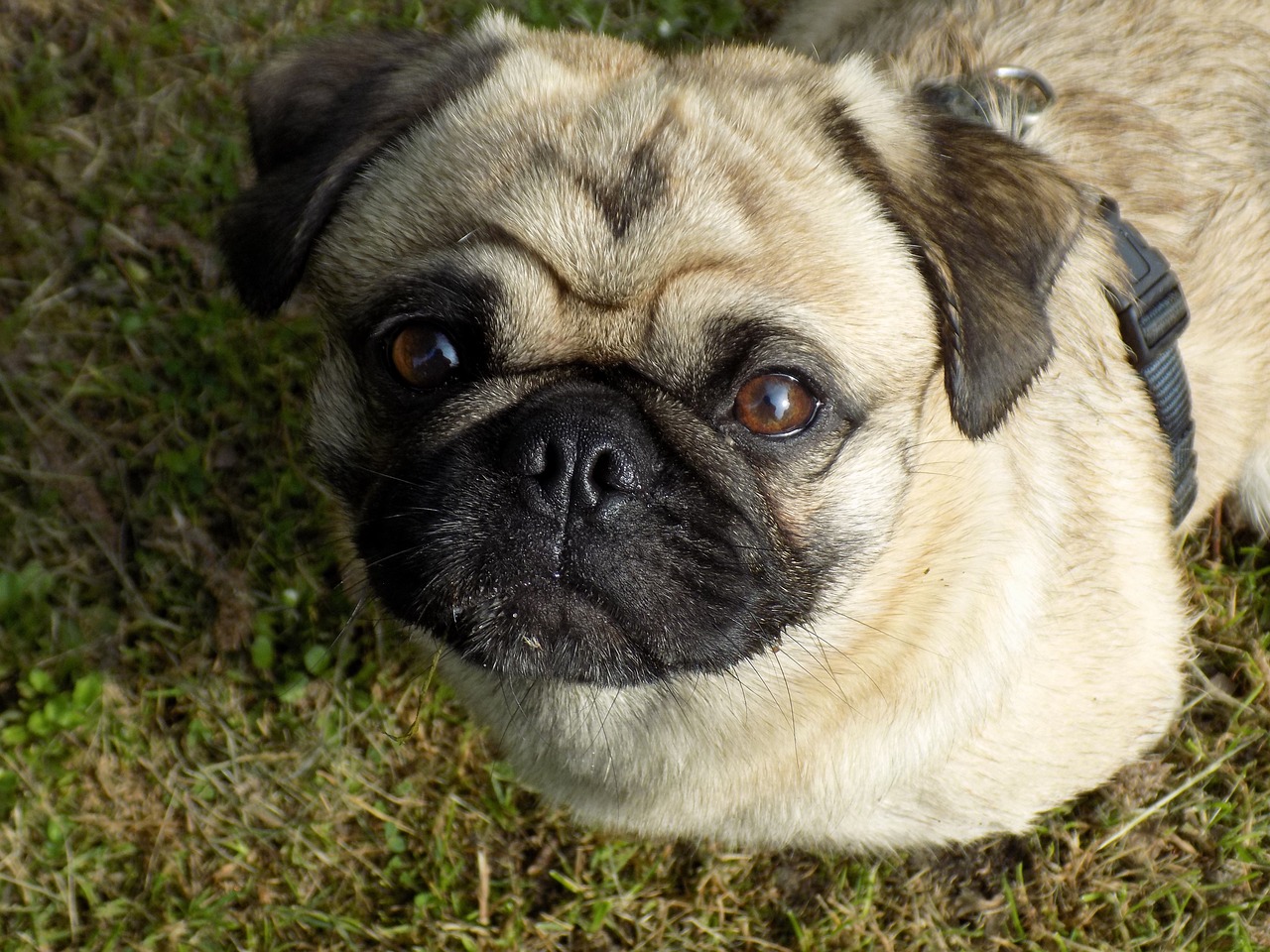
We Tried 5 Fresh Dog Food Brands
Is all the marketing hype worth it? Did our dogs enjoy them? Here’s our dogs’ totally honest review.
The Pug is a nice little dog, quite sturdy. People who like the look of a big dog but can't own one due to limited space or for any other reason, can be satisfied and buy a Pug. They will get the hound look while enjoying the advantages of the reduced size.
The Pug is a small size, very friendly and extremely gentle dog. He loves everyone. His rough appearance is by no means a reflection of his character.
This lively and cheerful little dog enjoys the company of all, young and old. Not aggressive at all, he is very sporty and loves to play.
He never gets tired of playing, but he can be very calm when necessary. He adapts very well to all situations.
He loves to be petted because he is very affectionate. He likes to be pampered and is not very grumpy. He is rather of joyful and peaceful tendency. Very reliable and faithful, he is not very good at guarding.
He's more likely to lick strangers rather than be suspicious of them. He will warn as a precaution but his lack of aggressiveness will quickly take over and he will welcome strangers peacefully.
He really loves everyone, even his canine counterparts.
He tends to be rather docile and calm, but we must avoid giving him the leader spot so that he doesn't just do as he pleases.
It is important to show him exactly where his place is in the household hierarchy. He must not become the leader of the pack.


The Pug is a full fledged mastiff. Despite his small size, he belongs to the mastiff category with his compact, muscular and very square gait.
The Pug has a very well proportioned body, like all the other dogs in his category. Size is really the only difference.
He has the same physique and slightly gruff endearing appearance of all mastiffs. His little angry looking face makes him a really adorable small dog.
Between 25 and 30 cm (9.84 to 11.81 inches) for the male
Between 25 and 30 cm (9.84 to 11.81 inches) for the female
Between 6 and 10 kg (13.23 to 22.05 pounds) for the male
Between 6 and 10 kg (13.23 to 22.05 pounds) for the female
His coat is rather sandy, very dark brown or black.
His coat is short and soft.
The pug's head is rather rounded in shape. His bulging eyes are dark. His ears are small and soft, looking like a rose or a button. His nose is black surrounded by a pretty black mask. His cute corkscrew tail is often curled up.
According to the FCI breeds nomenclature, this breed belongs to group 9, section 1 and is #253
Does this dog suit your lifestyle?
Every dog breed has its own characteristics. However, the actual character of a dog can vary from one to another within the same breed.
Find out if the Pug is your ideal dog breed with our quiz.
That will take you less than 3 minutes!
Take the quiz



City dwellers, country and sedentary people, young or old, families or singles, all can own this magnificent small dog.
He is suitable for sedentary or elderly people because he doesn't really need much exercise. He can live very well in an apartment because he doesn't need a lot of space to be happy.
The Pug is not a dog to be left alone. He must be surrounded by people and affection in order to fully develop.
He is pleasant, easy to live with and not at all aggressive, and all he needs to be happy is the presence of his masters. He loves to be cuddled and pampered and is very affectionate.
Eyes, heat (like most dogs with a flat muzzle), giving birth (often ending with a caesarean section), growth phase and joints should be monitored with this small mastiff dog.
The Pug has a rather fragile health that requires some special care and attention.
Nevertheless, his life expectancy is about 11 years.
GROOMING
The pug's weakest point is his eyes. This area of the body is particularly sensitive to redness and inflammation.
A good daily cleaning will thus avoid many visits to the vet.
His growth phase being rather delicate, particular attention must be paid to his physical activities and diet.
Skin folds should be cared for with a damp cloth or tissue to prevent the accumulation of crusts due to moisture.
Once well cleaned, it is very important to dry the folds in order to avoid the possibility of continuous itching.
In spite of his small size, the Pug belongs to the category of the mastiffs because of his particular physique.
He owes his name to Carlo Antonio Bertinazzi, the Italian actor nicknamed Pug, who personified Harlequin, whose black mask was reminiscent of that of the dog.
This very old breed, probably 400 years B.C., is said to have originated in China. Descended from the short-haired Pekingese, the Pug was often found alongside Tibetan monks at the time.
Around the 16th century, after winning over Japan, the breed was imported to Europe where he was a real success with royalty and nobility.
Highly appreciated in England and Holland, these two countries loudly claim paternity of the breed, attesting that the quality of the current breed is due to the excellent selection work carried out by one or the other.
The Pug has other names like Mops (because of his natural angry appearance) in Russia and Germany.
The aristocrats of the time were crazy about this little dog, including Princess Catherine Galitzine, Queen Marie-Antoinette, the Marquise de Pompadour and many other well-known royal figures.
Visual encyclopedia of dog breeds
https://pixabay.com/fr/photos/carlin-portrait-chien-2505762/
https://www.needpix.com/photo/download/1337841/dog-face-eyes-eye-pug-sweet-adorable-studio-isolated
https://pixabay.com/fr/photos/carlin-chien-de-race-pure-beige-1534689/
https://pixabay.com/fr/photos/mops-carlin-chien-2867946/
https://pixabay.com/fr/photos/carlin-chien-petits-animaux-3654360/
https://www.publicdomainpictures.net/fr/view-image.php?image=253685icture=portrait-de-chien-carlin
https://commons.wikimedia.org/wiki/File:Puggy_ThePug.jpg?uselang=fr

Is all the marketing hype worth it? Did our dogs enjoy them? Here’s our dogs’ totally honest review.